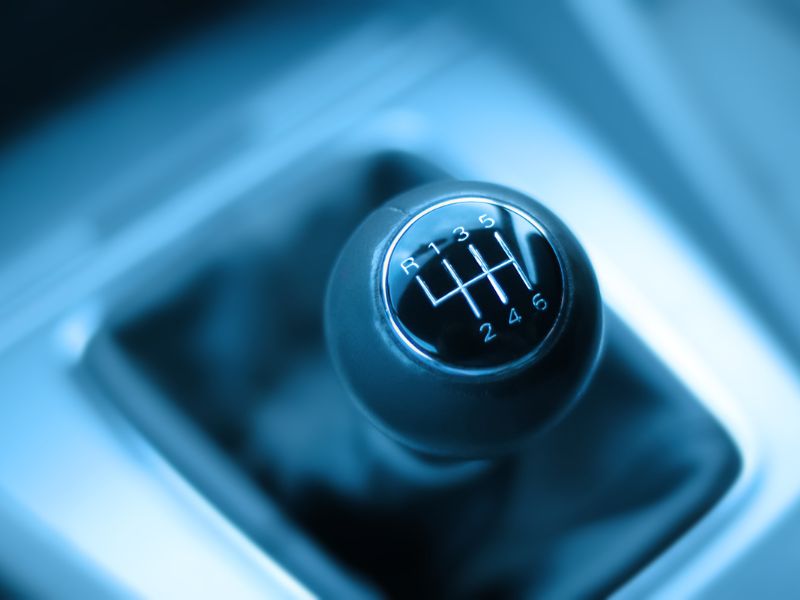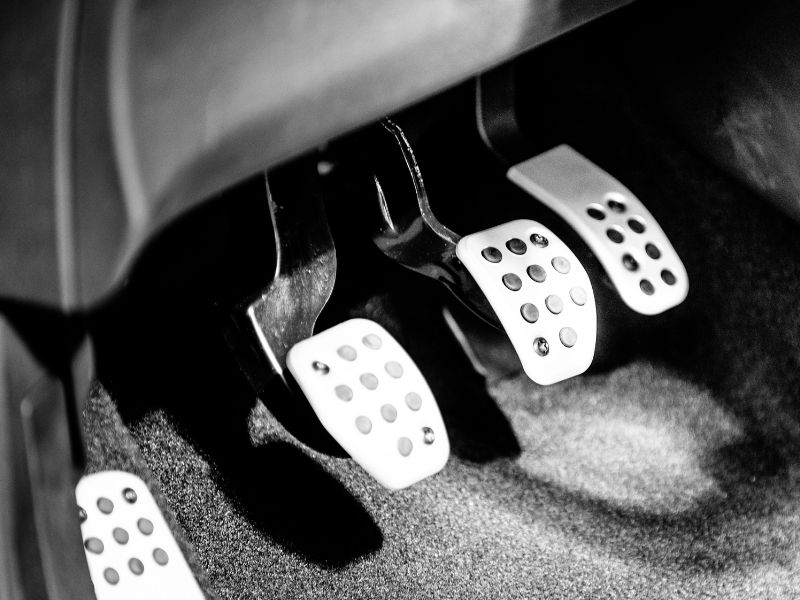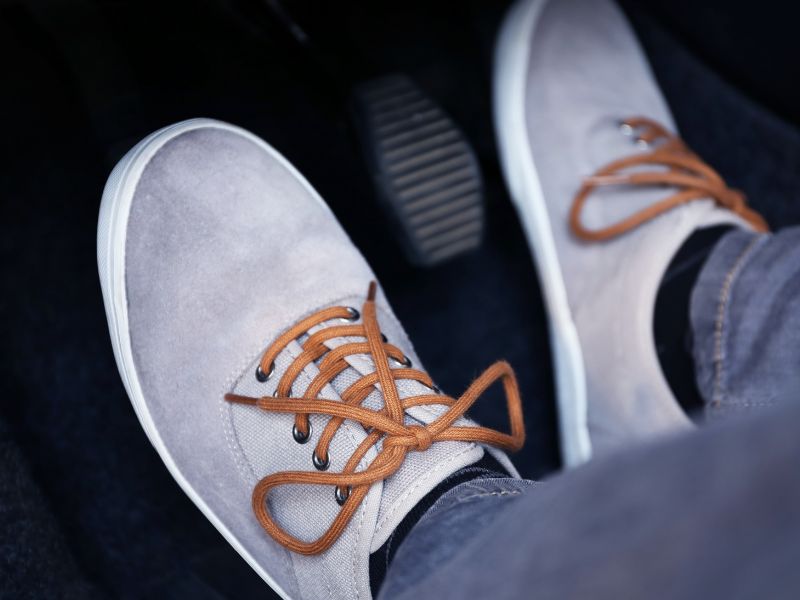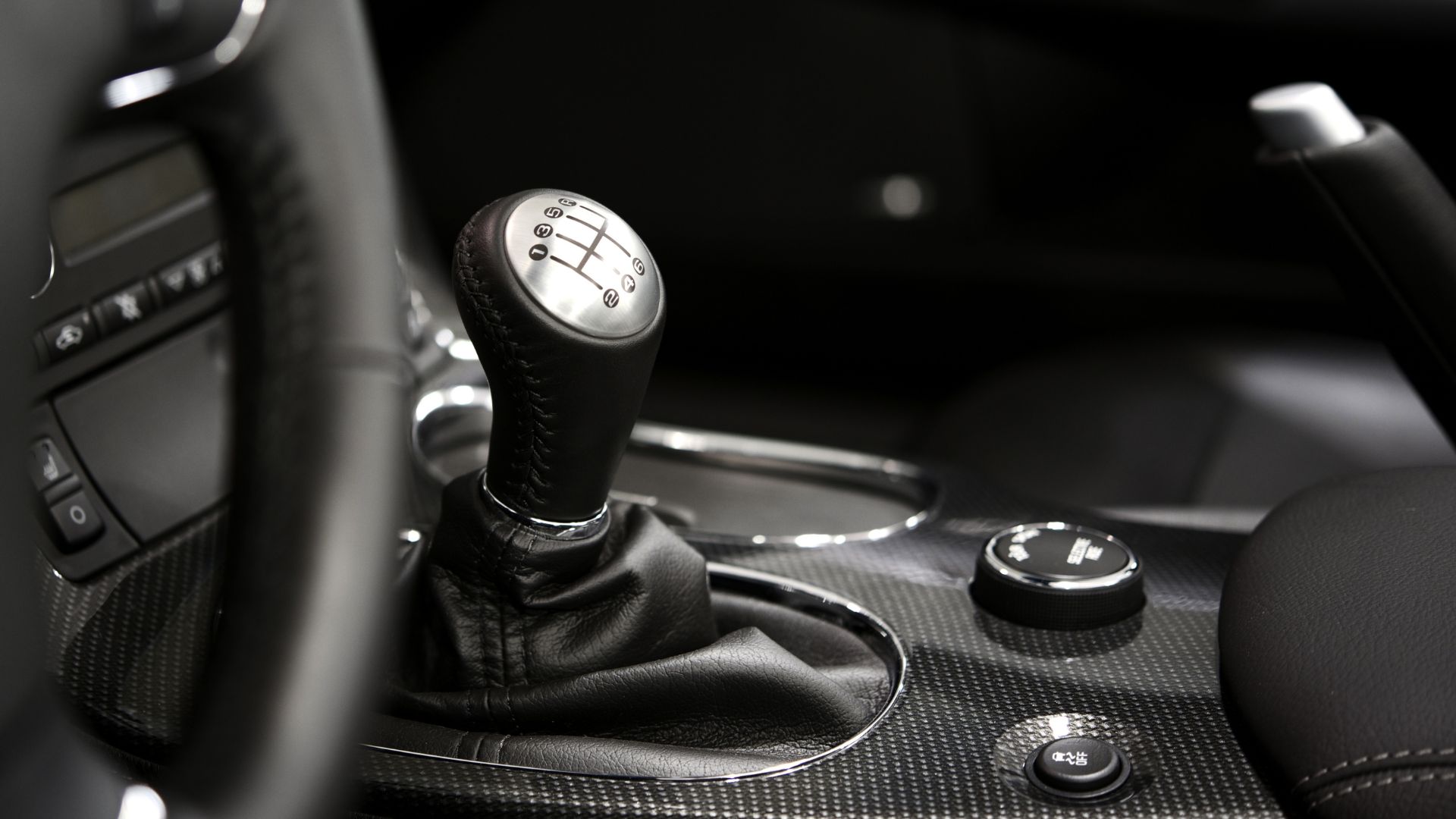If you already know how to drive an automatic, it’s time to learn stick shift.
Stay calm. Breathe. Fake it till you make it—you’ve got this.
What You Need to Know: Fundamental Concepts
Shifting is in your hands now.
You control the gears in a manual vehicle. Instead of shifting between park, reverse, neutral, and drive, you’ll be moving between forward gears (1-5 or 1-6, depending on the car), neutral, and reverse. The middle of the shift gate is neutral—everyone wiggles the stick left and right to check if the shifter is in neutral. In gear, the shifter won’t move side to side as easily. Some cars have tricky reverse gears, so don’t hesitate to ask if you’re unsure how to engage it.

Brakes are the same, but the gas pedal is more sensitive.
You now directly control engine power, unlike an automatic where it’s smoothed out for you. Get to know your RPM gauge—It tells you how fast the engine is spinning. The faster it spins, the more power you have. As you practice, you’ll learn to connect the engine’s RPM, the gear you’re in, and your speed. Feel the car, adapt, and aim to be smooth.

You have a new pedal: the clutch.
When you press the clutch pedal, it disconnects the engine from the wheels, effectively putting the car in neutral no matter what gear you’re in. You can’t stall in neutral. When in doubt, clutch in. Also, just like an automatic, a manual car will roll backward if you’re on a hill and in neutral.

Releasing the clutch engages the gear.
At a stop, if you release the clutch in any gear other than neutral, you will stall. When starting from a standstill the key is to release the clutch smoothly, never pausing in the middle. Letting it out too quickly can cause jerking or stalling.
Stalling happens, even to pros.
The car stalls when the engine’s RPM drops too low. To avoid this, clutch in to return to neutral. If you stall, just press the clutch and restart the car. Even experienced drivers stall when getting used to a new car. Skilled drivers try to use the clutch minimally to avoid wear, which is why it’s common to stall in a car you’re unfamiliar with. On the flip side, don’t ride the clutch (hold it halfway while giving gas)—this can cause the clutch to burn, and you’ll smell something like burning garbage. Instead, focus on a smooth clutch release while coordinating the gas.
Quick Tip Before Starting:
When you get in the driver’s seat, don’t start the car just yet.
Manual cars don’t shift into “park” when stopped. The emergency brake (or handbrake) is usually engaged, and the shifter is left in gear—typically first. Locate the emergency brake so you can release it smoothly when it’s time to go. Don’t forget to re-engage it and shift into first gear when parking, after shutting off the engine.
Press the clutch a few times to get a feel for it. You’ll need to press it all the way down to start the car, but for now, just get comfortable.
Look at the shifter to figure out if you have a 5-speed or 6-speed gearbox, and find where reverse is. It’s okay to ask if you’re unsure, you’re not expected to know. With the car still off, practice shifting. Depress the clutch and move the shifter into neutral (do the wiggle), then practice moving it to first gear. Shift into second, only releasing the clutch once you’re in second gear. Repeat from second to third, third to fourth, and so on. The goal is to shift gears without having to look down at the shifter.
When You’re Ready: Start the Car
Remember to press the clutch fully before starting the engine.
Clutch Grab Point Exercise
Before we start driving, here’s a quick exercise to find the grab point and get familiar with the car.
- Put the car in first gear and slowly release the clutch over 3-4 seconds.
- At first, nothing will happen. As you reach the halfway point, you’ll feel the car nudge forward. Continue releasing the clutch slowly, and the car will begin moving.
- Eventually, you’ll have your foot off the clutch entirely, and the car will be moving on its own in first gear.
Clutch in, bring the car to a stop, and shift to neutral.
Repeat this process a few times to get comfortable with the grab point.

Once you know where the grab point is, release the clutch to that point, then introduce a little gas as you release the rest of the clutch. Don’t feather the gas—press it smoothly and consistently. If it’s too little, you’ll stall; if it’s too much, you may see rpm’s rising without the car moving. The goal is to release the clutch smoothly over roughly 1 second as you mesh it with just enough gas to drive away smoothly. Start small and adjust as needed. Practice until you can “mesh” the clutch release with the gas smoothly.
Shifting and Driving
Now that you’re comfortable, let’s drive.

Start moving in first gear and step on the gas to pick up speed. When the engine hits around 3,000 RPM, shift into second gear. You may need to pause slightly to let the RPM drop for a smooth shift, especially if you rev past 3,000 RPM. Continue shifting through the gears as you gain speed. Want more speed? Ride the RPM a little higher before shifting.
If the car feels like it’s going to stall at any point, clutch in.
To stop, clutch in and brake. Ideally, you’ll learn to downshift to slow down and avoid coasting in neutral, but that’s for another post.
For now, celebrate—you can drive stick! thumbs up

If this guide helped you drive your first manual car home, I’d be overjoyed—that’s what this blog is all about. Congratulations and I wish you the best in your new driving journey! Also, you owe me a coffee! Don’t forget to share and subscribe. I’d love to hear about your experience.

